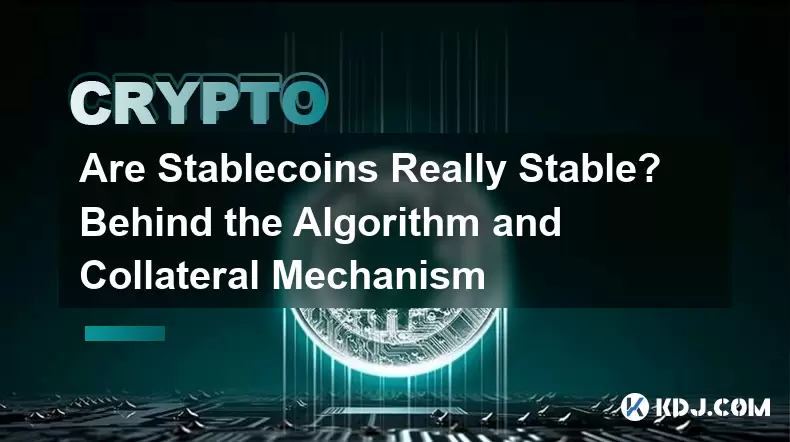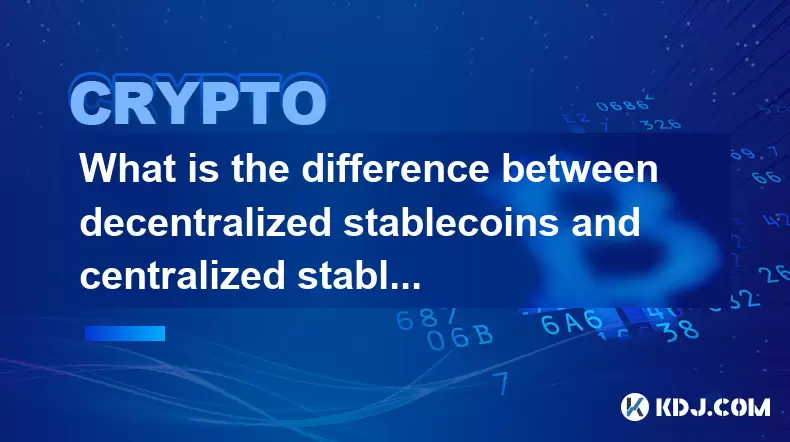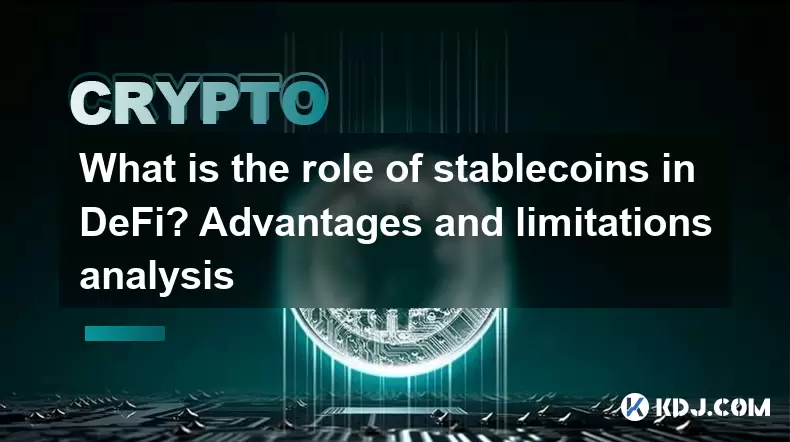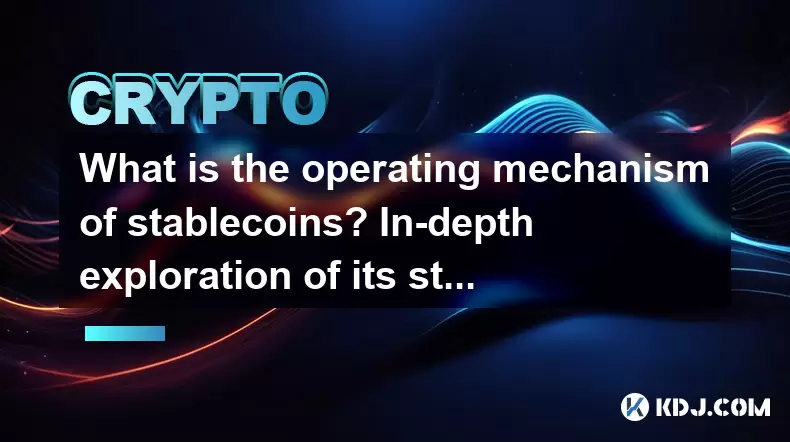-
 Bitcoin
Bitcoin $117900
0.31% -
 Ethereum
Ethereum $3766
0.28% -
 XRP
XRP $3.176
-0.31% -
 Tether USDt
Tether USDt $1.000
0.00% -
 BNB
BNB $795.6
1.51% -
 Solana
Solana $186.8
-1.09% -
 USDC
USDC $0.9999
-0.01% -
 Dogecoin
Dogecoin $0.2353
-1.33% -
 TRON
TRON $0.3226
1.49% -
 Cardano
Cardano $0.8172
-1.08% -
 Sui
Sui $4.178
3.06% -
 Hyperliquid
Hyperliquid $43.05
-3.39% -
 Stellar
Stellar $0.4367
-0.57% -
 Chainlink
Chainlink $18.62
1.47% -
 Hedera
Hedera $0.2828
6.63% -
 Bitcoin Cash
Bitcoin Cash $584.7
5.65% -
 Avalanche
Avalanche $24.81
2.53% -
 Litecoin
Litecoin $112.8
-0.88% -
 UNUS SED LEO
UNUS SED LEO $8.975
-0.08% -
 Shiba Inu
Shiba Inu $0.00001395
-1.07% -
 Toncoin
Toncoin $3.285
-1.05% -
 Ethena USDe
Ethena USDe $1.001
0.01% -
 Polkadot
Polkadot $4.123
0.76% -
 Uniswap
Uniswap $10.49
-0.18% -
 Monero
Monero $326.5
0.14% -
 Dai
Dai $0.9999
-0.02% -
 Bitget Token
Bitget Token $4.576
0.34% -
 Pepe
Pepe $0.00001247
-1.55% -
 Cronos
Cronos $0.1400
3.77% -
 Aave
Aave $295.1
-0.73%
Are Stablecoins Really Stable? Behind the Algorithm and Collateral Mechanism
Stablecoins aim to reduce crypto volatility by pegging to assets like the USD, but their stability depends on mechanisms like collateral and algorithms, which can falter.
May 29, 2025 at 11:21 am

Stablecoins have become a crucial part of the cryptocurrency ecosystem, offering a way to mitigate the extreme volatility often associated with cryptocurrencies like Bitcoin and Ethereum. The promise of stablecoins is to provide a stable value, often pegged to a fiat currency like the US dollar. But are stablecoins really as stable as they claim to be? To answer this question, we need to delve into the mechanisms that keep these digital assets stable, primarily focusing on the algorithm and collateral mechanisms.
Understanding Stablecoins
Stablecoins are cryptocurrencies designed to minimize the volatility typically associated with other digital assets. They achieve this by being pegged to a stable asset, such as a fiat currency, commodity, or even another cryptocurrency. There are primarily three types of stablecoins: fiat-collateralized, crypto-collateralized, and algorithmic stablecoins. Each type uses different mechanisms to maintain its peg, and understanding these mechanisms is essential to evaluate their stability.
Fiat-Collateralized Stablecoins
Fiat-collateralized stablecoins are backed by reserves of traditional fiat currencies. The most well-known example is Tether (USDT), which claims to be backed by an equivalent amount of US dollars held in reserve. The stability of these stablecoins relies on the issuer's ability to maintain a 1:1 ratio between the circulating supply of the stablecoin and the fiat currency held in reserve.
To ensure stability, issuers of fiat-collateralized stablecoins must regularly audit their reserves and provide transparency to the public. However, there have been instances where the transparency and accountability of these reserves have been questioned, leading to concerns about the true stability of these stablecoins.
Crypto-Collateralized Stablecoins
Crypto-collateralized stablecoins, on the other hand, are backed by other cryptocurrencies. A popular example is DAI, which is issued by the MakerDAO platform and is backed by a basket of cryptocurrencies, primarily Ethereum. The stability of crypto-collateralized stablecoins is maintained through over-collateralization, meaning that the value of the collateral must exceed the value of the stablecoins issued.
For instance, to mint 1 DAI, a user might need to deposit more than $1 worth of Ethereum as collateral. This over-collateralization acts as a buffer against market volatility. If the value of the collateral drops, the system can automatically liquidate the collateral to maintain the peg. However, the stability of these stablecoins can still be affected by the volatility of the underlying cryptocurrencies used as collateral.
Algorithmic Stablecoins
Algorithmic stablecoins do not rely on any collateral but instead use algorithms to control the supply of the stablecoin to maintain its peg. A notable example is TerraUSD (UST), which used an algorithm to adjust the supply of its sister token, LUNA, to stabilize the price of UST.
The stability of algorithmic stablecoins is highly dependent on the effectiveness of the algorithm and the market's confidence in the system. If the market loses faith in the algorithm, it can lead to a rapid de-pegging of the stablecoin, as seen with the collapse of TerraUSD in May 2022. The lack of collateral means that algorithmic stablecoins can be more susceptible to market sentiment and manipulation.
Real-World Stability Challenges
Despite the mechanisms in place to maintain stability, stablecoins have faced numerous challenges in the real world. De-pegging events, where the stablecoin loses its peg to the underlying asset, have occurred across all types of stablecoins. These events can be triggered by various factors, including market panic, liquidity issues, or issues with the underlying collateral or algorithm.
For example, during times of extreme market volatility, even fiat-collateralized stablecoins like USDT have experienced temporary de-pegging. Similarly, crypto-collateralized stablecoins like DAI have faced challenges when the value of their collateral, such as Ethereum, experiences significant fluctuations.
Evaluating the Stability of Stablecoins
To evaluate the stability of stablecoins, it is important to consider several factors:
- Transparency and Audits: Regular audits and transparency about the reserves or collateral are crucial for maintaining trust in the stability of the stablecoin.
- Market Confidence: The market's confidence in the stablecoin and its underlying mechanisms plays a significant role in its stability.
- Liquidity: Sufficient liquidity is essential to ensure that the stablecoin can maintain its peg during times of high demand or market stress.
- Regulatory Environment: The regulatory environment can impact the stability of stablecoins, particularly for fiat-collateralized stablecoins that rely on traditional financial systems.
Case Studies of Stablecoin Stability
Examining specific case studies can provide further insight into the stability of stablecoins. For instance, the collapse of TerraUSD (UST) in May 2022 serves as a stark reminder of the risks associated with algorithmic stablecoins. Despite being pegged to the US dollar, UST lost its peg rapidly, leading to significant losses for investors.
On the other hand, Tether (USDT) has faced multiple controversies regarding the transparency of its reserves. In 2021, Tether settled with the New York Attorney General's office, agreeing to pay $18.5 million in penalties and to provide regular reports on its reserves. These events highlight the importance of transparency and regulatory compliance in maintaining the stability of stablecoins.
Conclusion on Stablecoin Stability
While stablecoins are designed to be stable, their real-world performance can vary significantly. The stability of a stablecoin depends on the effectiveness of its underlying mechanism, whether it be collateral or algorithmic, as well as external factors such as market confidence and regulatory environment. Understanding these factors is crucial for investors and users of stablecoins to make informed decisions about their use and potential risks.
Frequently Asked Questions
Q: How can I check the stability of a stablecoin before investing in it?
A: To check the stability of a stablecoin, you should look at several factors:
- Regular audits and transparency reports from the issuer.
- Historical data on the stablecoin's price to see if it has maintained its peg.
- Market sentiment and news about the stablecoin to gauge confidence.
- The type of collateral or algorithm used and its effectiveness in maintaining the peg.
Q: Are there any tools or platforms that help monitor stablecoin stability?
A: Yes, several platforms and tools can help monitor stablecoin stability. For example:
- CoinGecko and CoinMarketCap provide real-time price data and historical charts for stablecoins.
- Stablecoin.watch offers detailed insights into the stability and collateralization of various stablecoins.
- DeFi Pulse and similar platforms can provide data on the health of decentralized stablecoins like DAI.
Q: Can stablecoins be used as a safe haven during crypto market crashes?
A: Stablecoins are often used as a safe haven during crypto market crashes because they are designed to maintain a stable value. However, their effectiveness as a safe haven depends on the type of stablecoin and the specific circumstances of the market crash. Fiat-collateralized stablecoins like USDT are generally considered more reliable during such times, but even they can face temporary de-pegging events. It's important to monitor the stability and liquidity of the stablecoin during market stress.
Q: What should I do if a stablecoin I hold loses its peg?
A: If a stablecoin you hold loses its peg, you should:
- Monitor the situation closely to understand if it's a temporary de-pegging or a more serious issue.
- Consider converting your stablecoin to another more stable asset if you believe the de-pegging will persist.
- Stay informed about any official statements or actions from the stablecoin issuer that could affect the recovery of the peg.
- Diversify your holdings to mitigate risk, as relying solely on one stablecoin can be risky during de-pegging events.
Disclaimer:info@kdj.com
The information provided is not trading advice. kdj.com does not assume any responsibility for any investments made based on the information provided in this article. Cryptocurrencies are highly volatile and it is highly recommended that you invest with caution after thorough research!
If you believe that the content used on this website infringes your copyright, please contact us immediately (info@kdj.com) and we will delete it promptly.
- Cryptos to Watch in 2025: Punisher Coin, Chainlink, and the Altcoin Arena
- 2025-07-27 18:30:13
- Bitcoin, Altcoins, Rebound: Navigating the Crypto Comeback Trail
- 2025-07-27 18:30:13
- Ethereum, Bitcoin, and Altcoins: A Shift in Crypto Tides?
- 2025-07-27 19:10:13
- Windtree Therapeutics' Bold BNB Strategy: A $520 Million Crypto Play
- 2025-07-27 19:10:13
- Solana, Staking, and Unilabs: What's the Buzz in the Crypto Space?
- 2025-07-27 16:50:13
- VeChain, HBAR, Remittix: Navigating the Crypto Landscape in 2025
- 2025-07-27 17:10:12
Related knowledge

What is the difference between decentralized stablecoins and centralized stablecoins? Pros and cons comparison
Jun 15,2025 at 09:42am
What Are Stablecoins and Why Do They Matter?Stablecoins are a category of cryptocurrencies designed to maintain a stable value, usually pegged to an e...

What is the role of stablecoins in DeFi? Advantages and limitations analysis
Jun 14,2025 at 06:28am
Understanding Stablecoins in the DeFi EcosystemStablecoins play a pivotal role in the decentralized finance (DeFi) landscape by providing a bridge bet...

How do algorithmic stablecoins work? Potential risks and market impact
Jun 12,2025 at 02:07pm
Understanding Algorithmic StablecoinsAlgorithmic stablecoins are a type of cryptocurrency designed to maintain a stable value relative to a specific a...

How do stablecoins anchor legal currencies? Technical and economic model analysis
Jun 16,2025 at 08:43am
Understanding the Concept of StablecoinsStablecoins are a category of cryptocurrencies designed to maintain a stable value relative to a specific asse...

How do stablecoins maintain price stability? Principles and risk analysis
Jun 11,2025 at 12:01am
Understanding the Mechanisms Behind Stablecoin StabilityStablecoins are a category of cryptocurrencies designed to minimize price volatility, often pe...

What is the operating mechanism of stablecoins? In-depth exploration of its stability principle
Jun 10,2025 at 09:28pm
Understanding the Core Concept of StablecoinsStablecoins are a unique category within the cryptocurrency market, designed to address one of the most s...

What is the difference between decentralized stablecoins and centralized stablecoins? Pros and cons comparison
Jun 15,2025 at 09:42am
What Are Stablecoins and Why Do They Matter?Stablecoins are a category of cryptocurrencies designed to maintain a stable value, usually pegged to an e...

What is the role of stablecoins in DeFi? Advantages and limitations analysis
Jun 14,2025 at 06:28am
Understanding Stablecoins in the DeFi EcosystemStablecoins play a pivotal role in the decentralized finance (DeFi) landscape by providing a bridge bet...

How do algorithmic stablecoins work? Potential risks and market impact
Jun 12,2025 at 02:07pm
Understanding Algorithmic StablecoinsAlgorithmic stablecoins are a type of cryptocurrency designed to maintain a stable value relative to a specific a...

How do stablecoins anchor legal currencies? Technical and economic model analysis
Jun 16,2025 at 08:43am
Understanding the Concept of StablecoinsStablecoins are a category of cryptocurrencies designed to maintain a stable value relative to a specific asse...

How do stablecoins maintain price stability? Principles and risk analysis
Jun 11,2025 at 12:01am
Understanding the Mechanisms Behind Stablecoin StabilityStablecoins are a category of cryptocurrencies designed to minimize price volatility, often pe...

What is the operating mechanism of stablecoins? In-depth exploration of its stability principle
Jun 10,2025 at 09:28pm
Understanding the Core Concept of StablecoinsStablecoins are a unique category within the cryptocurrency market, designed to address one of the most s...
See all articles

























































































